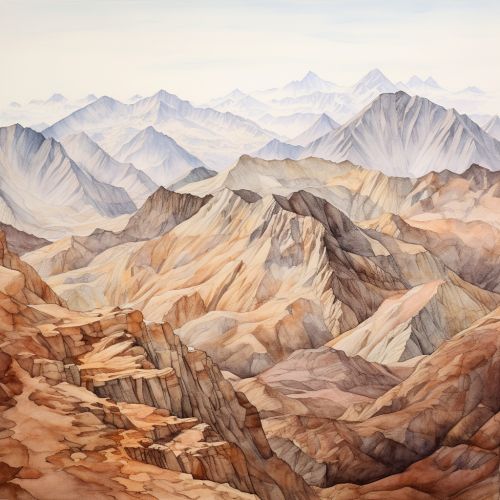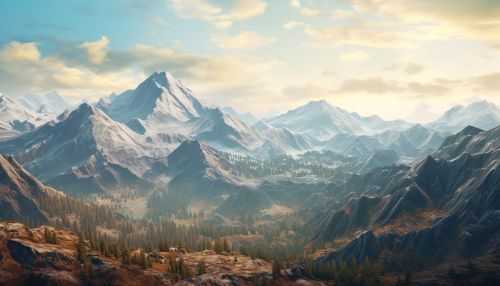Relief (geography)
Introduction
Relief in geographical terms refers to the variations in the elevation of the Earth's surface. It is a fundamental concept in the study of physical geography, and plays a significant role in the distribution of ecosystems and human settlements. Relief can range from very flat terrain to extremely mountainous terrain, and everything in between.
Types of Relief
There are several types of relief, including mountainous, hilly, plateau, and plain relief. Each type has its own unique characteristics and influences on the environment and human activities.
Mountainous Relief


Mountainous relief refers to areas of the Earth's surface where there is a high variation in elevation, typically characterized by steep slopes and high peaks. These areas are often formed by tectonic forces such as plate tectonics, volcanic activity, and erosion. Mountainous relief can have a significant impact on climate, as the elevation can cause cooler temperatures and increased precipitation.
Hilly Relief
Hilly relief refers to areas that have moderate variation in elevation. These areas are not as high or as steep as mountainous areas, but they still have significant variation in elevation. Hilly areas can be formed by various geological processes, including erosion and the folding of the Earth's crust.
Plateau Relief
Plateau relief refers to areas of the Earth's surface that are elevated but relatively flat. These areas can be formed by various geological processes, including volcanic activity and the uplift of the Earth's crust. Plateaus can have a significant impact on the climate and ecosystems of an area, as they often create barriers to wind and precipitation.
Plain Relief
Plain relief refers to areas of the Earth's surface that have little variation in elevation. These areas are typically flat or gently rolling, and can be formed by various geological processes, including sediment deposition and erosion. Plains can have a significant impact on human activities, as they are often ideal for agriculture and settlement due to their flat terrain and fertile soils.
Factors Influencing Relief
Several factors can influence the relief of an area, including geological processes, climate, and human activities.
Geological Processes
Geological processes, such as tectonic activity, volcanic activity, and erosion, can significantly influence the relief of an area. For example, tectonic forces can create mountain ranges, while erosion can create valleys and canyons.
Climate
Climate can also have a significant impact on relief. For example, areas with high levels of precipitation are more likely to experience erosion, which can create valleys and other features. Similarly, areas with cold climates are more likely to experience glaciation, which can create unique relief features such as fjords and glacial valleys.
Human Activities
Human activities, such as agriculture, mining, and urban development, can also influence relief. For example, farming can lead to soil erosion, which can alter the relief of an area. Similarly, urban development can result in the leveling of hills and other features, changing the relief of the area.
Impact of Relief on Human Activities
Relief can have a significant impact on human activities, including settlement patterns, agriculture, and transportation.
Settlement Patterns
Relief can influence where people choose to live. For example, flat areas are often ideal for building homes and cities, while mountainous areas can be more difficult to settle due to the steep terrain.
Agriculture
Relief can also impact agriculture. Flat areas are typically easier to farm than hilly or mountainous areas, as they require less effort to prepare and maintain. However, certain crops may thrive in hilly or mountainous areas due to the cooler temperatures and different soil conditions.
Transportation
Relief can also influence transportation. Flat areas are typically easier to traverse, making them ideal for roads and railways. However, mountainous and hilly areas can present challenges for transportation, requiring the construction of tunnels, bridges, and switchbacks.
